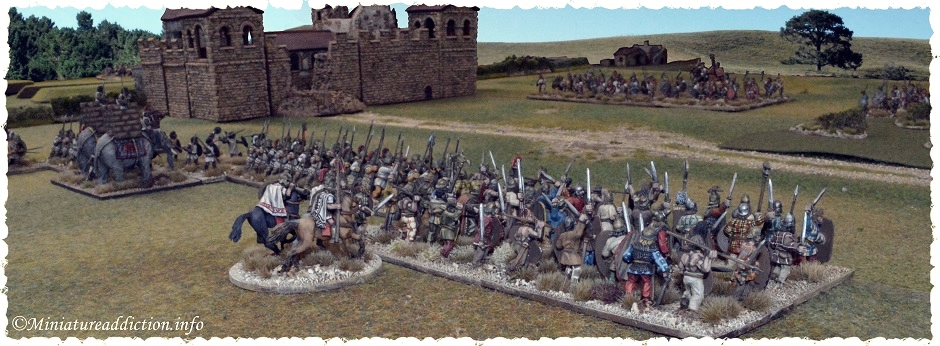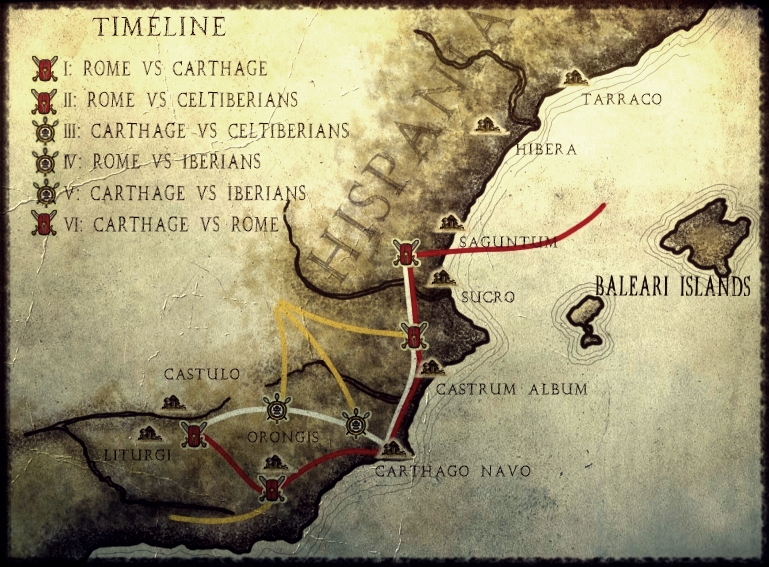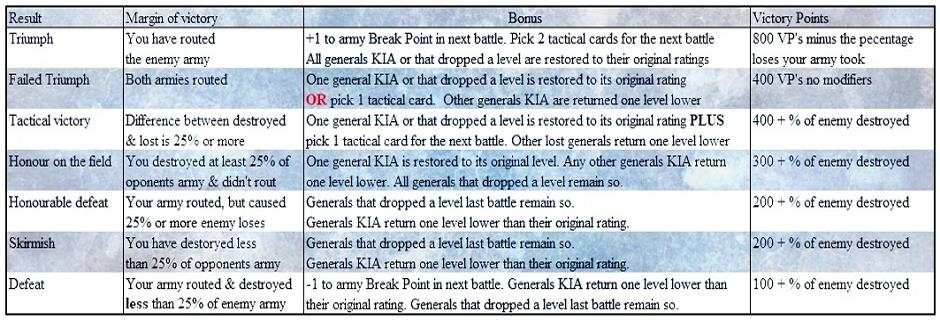
A Quick Solo Campaign set in Hispania
At the time of writing this article the covid19 lock down was in full swing, while my painting motivation wasn’t. Equally, I wasn’t keen on washing windows or throwing the vacuum cleaner around as my good wife was suggesting. Instead I set about amusing myself trying to come up with a simple solo campaign system based around the second Punic war. To say I’m not good at this sort of thing would be an understatement, but working on the theory that practice makes perfect I decided to crack on anyway.

Campaign back story and the basic format
Although set in Hispania just after Hannibal had crossed the Pyrenees. These games will have no real connection to any historical events that took place during this time. The following map and timeline only appear here to add some continuity and flavour to my mini campaign.


Basic format: Three nationalities with no allies, Republic Romans, Carthaginians and Celtiberians-Iberians. All of which are standard 400 point Impetus armies with no cards or Genius commanders allowed. The battles were run on a twenty one point time clock that ticks down 1D6 points every complete turn. The nation with the highest total victory points after all six campaign battles have been completed is declared the winner.
Victory points and army bonuses
The victory point system in the chart below was pretty much lifted straight from the rule book. I have just tweaked the point values slightly to make the final results more competitive. Each victory level generates a set of temporary bonuses or handicaps for the combatants. Tactical card rewards and changes to an army’s break point (half the V.D.T) are for the following battle only. Statements that effect generals however, are on going and last throughout the campaign. The base V.D.T (total army points) for each army does not change throughout the campaign. No matter how many times a general may change it’s level, the army itself will always maintain it’s original base V.D.T value. The only other change I’ve made (after reading the forums) is to reduce the discipline test modifier for reliable generals down to just one.

Victory chart examples
Below are two examples of how the victory chart works. When Calculating army casualty percentages I simply divide the amount of points lost by the army’s total value. The resulting number is then multiplied by one hundred to give the percentage of losses sustained (14/42=.33x 100= 33%).
Tactical Victory-Defeat
The Romans have destroyed 42% of a Carthaginian army while the Carthaginians only managed to destroy 14% of the Roman army. With a difference of more than 25% Carthage receives a Skirmish result 214 points (200 pts + enemy losses). Any generals K.I.A. return one level lower and generals demoted during the battle remain so. Rome wins a tactical victory worth 442 points (400 pts + enemy losses). They may choose a single tactical card for the next battle and one general that was K.I.A. or demoted returns at its original rating.
Honour on the field.
In this example neither army has routed, but both sides have destroyed 25% or more of their opponents force. An Iberian army has managed to destroy 31% of a Roman army (300+31= 331pts). In turn the Romans have inflicted 28% losses on the Iberian army (300+28=328pts). Each army regains a single K.I.A. general (if any) at it’s original rating. All demoted generals remain so. Other K.I.A generals return one level lower than their original ranking.

In order to inject a little more variation into what is essentially a collection of set piece solo games. I put together a simple chart that when triggered will give one or both armies a minor advantage in the coming battle.
Pregame random advantage chart
Before every game both armies roll 2D6 to decide who is the aggressor. If either party rolls a double (before adding their mounted bonus) then they are free to use the appropriate advantage listed on the chart pictured here.

Special Rules for Commanders
For this campaign I intend to use only the four lowest levels of command rankings, Incompetent, Poor, Reliable or Expert. Of these ratings only the army commanders may rise to the level of an expert during subsequent campaign games. Reliable sub-commanders or army commanders who have obtained expert status in an earlier game. Can if promoted in a following game choose one of the four traits available in the rule book (Brave, Severe, Confident or Cavalry commander). Any commanders killed in action or demoted below reliable will automatically lose their bonus trait even if their ranking is returned after the battle.
All games were played on a standard six by four foot table using the basic victory conditions as written in the rule book. Although I have messed about with these rules for sometime now, my exposure to other play styles and rule interpretations has been next to none. So the seasoned Impetus players out there will have to cut me some slack if they find some of the army lists or strategies presented here a little strange.





